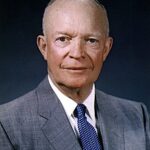The Little Rock Crisis Decision
President Dwight D. Eisenhower faced a critical test of federal authority in September 1957. The Little Rock Crisis erupted when nine African American students attempted to integrate Central High School. Arkansas Governor Orval Faubus deployed National Guard troops to block their entry. Eisenhower initially hesitated to intervene directly in the volatile situation.
Presidential Reluctance and Consequences
Eisenhower’s delayed response sent mixed signals about federal commitment to desegregation. ⚠️ His reluctance emboldened segregationists across the South. The president preferred behind-the-scenes negotiations over direct federal action. This approach allowed the crisis to escalate for three weeks.
Federal Intervention Finally Ordered
On September 24, 1957, Eisenhower finally federalized the Arkansas National Guard. He deployed 1,000 paratroopers from the 101st Airborne Division to Little Rock. 📊 This marked the first use of federal troops to protect African Americans since Reconstruction. The Little Rock Nine finally entered Central High School under military protection.
Impact:
Immediate Political Consequences
Eisenhower’s hesitation during the Little Rock Crisis damaged federal credibility on civil rights. Southern segregationists interpreted his delay as weakness or tacit support. 🔥 The crisis escalated unnecessarily due to unclear federal messaging. When troops finally arrived, the dramatic intervention shocked both supporters and opponents.
Long-term Civil Rights Impact
The delayed federal response slowed desegregation momentum across the South. Other states adopted similar massive resistance strategies after observing Arkansas. 📉 School integration efforts faced increased opposition and legal challenges. However, the eventual military intervention established important federal precedent for civil rights enforcement.
International Reputation Damage
The Little Rock Crisis became international news during the Cold War. 🌍 Communist nations used American racial violence as propaganda against democracy. Images of federal troops escorting students highlighted America’s civil rights failures. The crisis undermined U.S. moral leadership in promoting freedom and equality worldwide.
